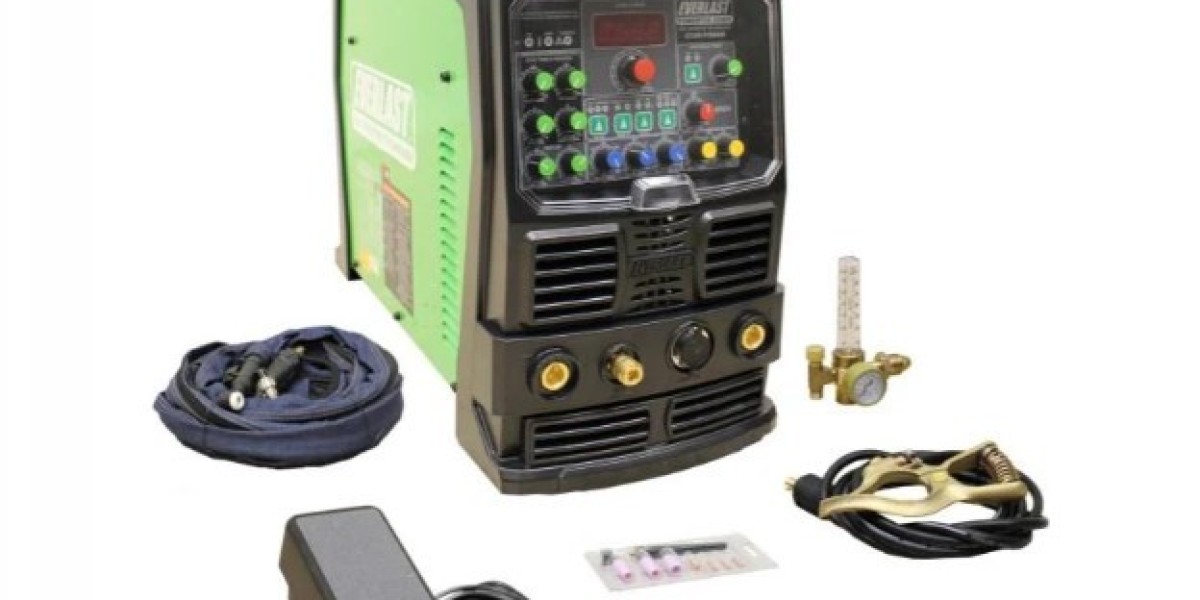
AC/DC Capability for Versatility
A critical feature to consider in a TIG welder machine is its ability to operate on both AC (alternating current) and DC (direct current). This capability significantly impacts the types of metals you can weld and the overall flexibility of the machine. AC power is ideal for welding aluminium and magnesium, which require a cleaning action to remove oxide layers. On the other hand, DC power works best for harder metals like steel and stainless steel, offering smooth and stable arcs. A TIG welder with AC/DC functionality allows you to take on a broader range of projects without needing separate machines, saving you time and money.
Pulse Welding for Precision
Pulse welding is another feature to prioritize when selecting a TIG welder machine. It allows you to control the current flow during welding, alternating between high and low currents at specific intervals. This precise control is essential for delicate welds, as it minimizes heat input and prevents distortion or damage to thin materials. Whether you’re working on fine art pieces or intricate automotive parts, a TIG welder with pulse functionality ensures cleaner, more accurate welds. Additionally, this feature helps reduce spatter, making post-weld cleaning much more accessible.
Adjustable Gas Control for Clean Welds
The type and flow of gas used in welding play a crucial role in achieving high-quality welds. TIG welder gas, typically argon or a mixture of argon and helium, acts as a shield to protect the weld pool from air contamination. A good TIG welder machine should come with adjustable gas flow controls. This feature allows you to fine-tune the gas output based on the material and welding conditions. Proper gas control ensures consistent weld quality and reduces the likelihood of defects such as porosity. Remember, the suitable TIG welder gas combined with adjustable settings is critical to producing clean, professional-grade welds.
High-Frequency Start for Easier Operation
One of the most user-friendly features of a TIG welder machine is a high-frequency start. This feature eliminates the need for physical contact between the tungsten electrode and the workpiece to initiate the arc. By using high-frequency electrical pulses, this system creates a smooth arc start without contaminating the weld or damaging the electrode. For beginners, this makes operating the machine much more accessible, while professionals appreciate the time saved during repetitive tasks. A high-frequency start is especially beneficial when welding intricate designs or in tight spaces where precision is critical.
Duty Cycle for Prolonged Usage
The duty cycle of a TIG welder machine refers to how long it can operate continuously without overheating. This is typically expressed as a percentage at a specific amperage. For example, a 60% duty cycle at 200 amps means the machine can run for six minutes before needing four minutes to cool down. A higher duty cycle is essential for demanding projects that require extended welding sessions. This feature ensures consistent performance, reduces downtime, and increases overall productivity. While lightweight TIG welders are convenient, always check the duty cycle to ensure the machine meets your project requirements.
Why Choosing the Right TIG Welder Matters
Investing in a suitable TIG welder machine means better results, greater efficiency, and less frustration during your projects. With features like AC/DC capability, pulse welding, adjustable TIG welder gas control, high-frequency start, and a reliable duty cycle, you’ll have everything you need to tackle various welding tasks with confidence. While it might be tempting to go for the cheapest option, compromising on essential features could lead to subpar welds and costly repairs in the long run. Taking the time to understand your specific needs and how these features address them will ultimately help you choose a machine that offers long-lasting value.
Conclusion
Choosing the perfect TIG welder machine involves considering several essential features that directly impact your welding experience. From the versatility of AC/DC capability to the precision of pulse welding, each feature plays a unique role in improving weld quality and ease of use. Adjustable TIG welder gas control, high-frequency start, and a robust duty cycle round out the list of must-haves for anyone serious about welding. By focusing on these five essential features, you’ll not only enhance your welding projects but also ensure your machine delivers reliable performance for years to come. Remember, the right TIG welder isn’t just a tool—it’s an investment in the quality of your work.